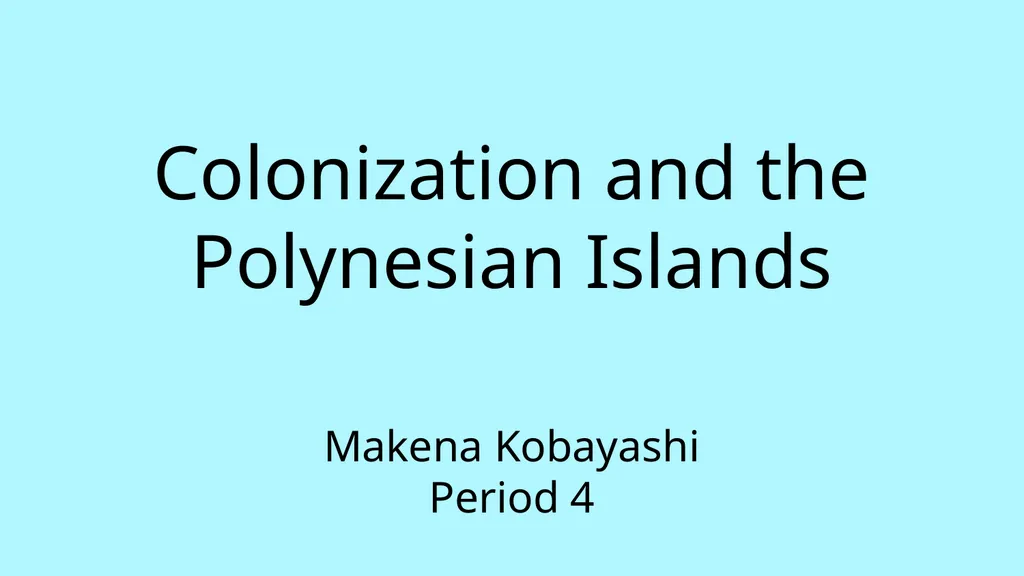Colonization and the Polynesian Islands Makena
Author : tatyana-admore | Published Date : 2025-05-12
Description: Colonization and the Polynesian Islands Makena Kobayashi Period 4 Primary Research Question Analyze the social and political effects of European colonization on the Polynesian islands during 14501900 What are the Polynesian islands
Presentation Embed Code
Download Presentation
Download
Presentation The PPT/PDF document
"Colonization and the Polynesian Islands Makena" is the property of its rightful owner.
Permission is granted to download and print the materials on this website for personal, non-commercial use only,
and to display it on your personal computer provided you do not modify the materials and that you retain all
copyright notices contained in the materials. By downloading content from our website, you accept the terms of
this agreement.
Transcript:Colonization and the Polynesian Islands Makena:
Colonization and the Polynesian Islands Makena Kobayashi Period 4 Primary Research Question: Analyze the social and political effects of European colonization on the Polynesian islands during 1450-1900. What are the Polynesian islands? Polynesia is group of many islands that cover a triangular-shaped region in the Pacific Ocean. There are over 1,000 total islands in Polynesia, but the most recognizable ones include Hawaii, Tahiti, and Samoa. http://www.beautifulpacific.com/south-pacific-maps/south-pacific/polynesia.gif Overview of European Colonization The first European explorer to visit Polynesia was a Spanish explorer in the 1500s. The Dutch came to Polynesia in the 1600s, and British and French trips followed in the 1700s. Polynesia was exploited for its various natural resources and was taken over for various strategic reasons. The effects of colonialism vary from island to island, so I will focus on three specific islands: Samoa, Tahiti, and Hawaii. Samoa What happened: First contact with Europe was with the Dutch in the 1830’s Became a major trading center Missionaries arrived, spread Christianity easily Samoa became a colony inadvertently due to Europe’s need for natural resources Island became split between the U.S., Britain, and Germany because of the race to gain as much land and power as they could Lasting Effects: Samoans were taught to read/write and told to follow European beliefs Economy remains largely dependent on aid from overseas nations, economy depends largely on tourism Majority of the nation is Christian, major loss of traditional beliefs American Samoa (eastern islands) remains a part of American territory Able to maintain language and social customs Tahiti What happened: Britain was the first to visit Tahiti even though Spain first discovered it In the 1800’s, the Tahitian chief embraced Christianity & established a “missionary Kingdom” The Tahitians favored the French presence over the British, and they were pressured to signed a request for French protection France now had a tight hold over Tahitian affairs Lasting effects: European presence disrupted traditional culture Brought prostitution, disease, and alcohol Majority of the residents speak French Tahiti is officially an overseas territory of France French state controls currency, immigration, law & order, foreign affairs, etc. Majority of the population is Christian Hawaii What Happened: Missionaries from New England est. operations to convert people in 1820 Rulers accepted Western changes because it would help make business deals Europeans exploited their natural resources and trade began to boom Commercial sugar plantations arose in 1835 Hawaii began to sell its land














